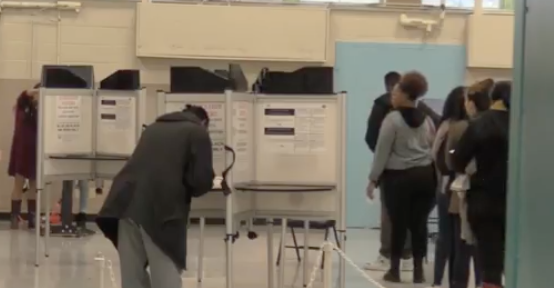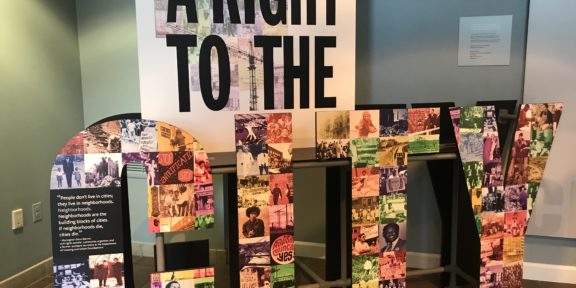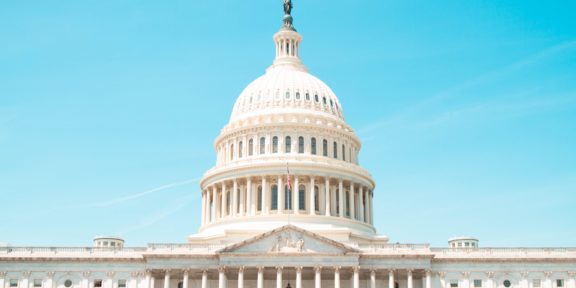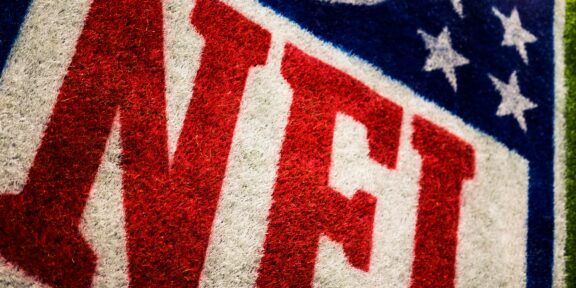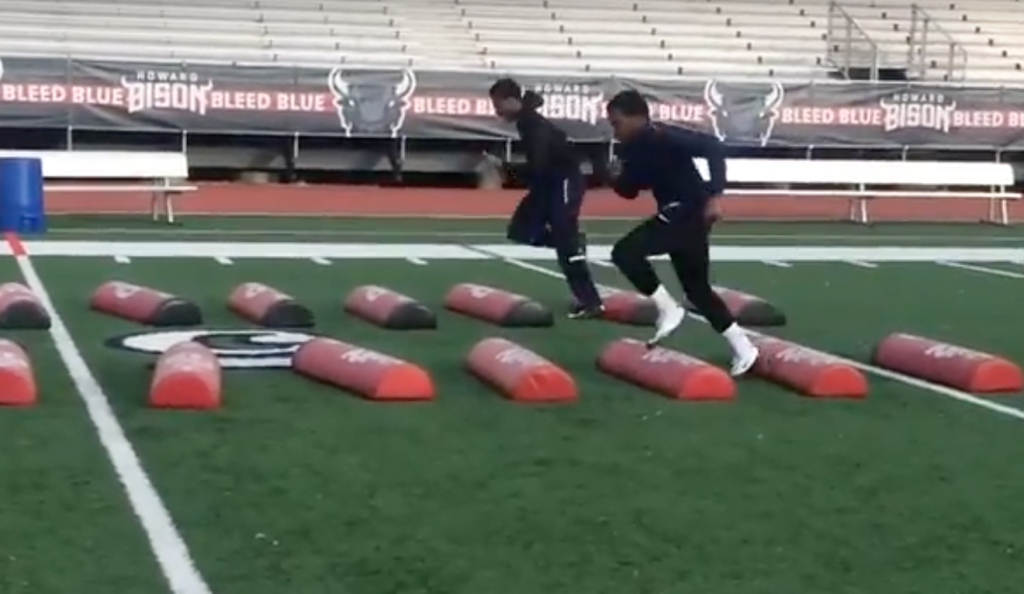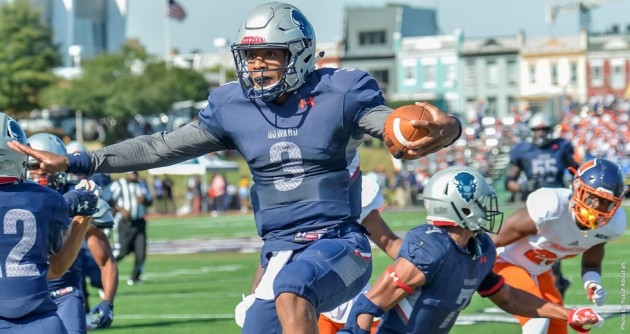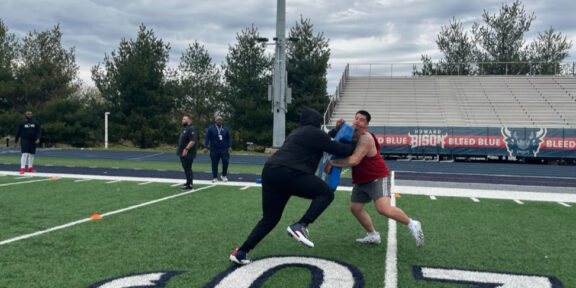WASHINGTON – Five college scholarship prospects at Friendship Collegiate Academy, one of the top high school football teams in the metropolitan area, suffered season-ending concussions last year. Three other players missed several games each because of similar injuries.
As the current season wound to a close, only four players had been diagnosed with concussions, and all returned to practice. School officials say a major reason is new generation helmets engineered to address one of the most serious safety concerns facing teams from Pop Warner youth leagues to the NFL.
“There’s no actual way to prevent a concussion. If a player gets hit too hard, his brain will rattle. It’s inevitable,” said Christina Carrillo, the athletic trainer at Friendship Collegiate Academy, a public charter school here. “However, I do believe that the new helmets have a lot to do with our concussion numbers being cut in half since last season.”
Chronic traumatic encephalopathy, or CTE, is a degenerative brain disease associated with repeated blows to the head and linked to concussions. High school football players are twice as likely to suffer concussions as their college counterparts, and as high school athletes in other sports, according to a 2013 study from the Institute of Medicine of the National Academy of Sciences.
Fears about CTE have been building in athletic circles for years. “Concussion,” a 2015 movie based on the book “Brain Game,” highlighted the developing science around concussions and long-term brain damage in football players.
Neuropathologist Ann McKee, director of the CTE Center at Boston University, examined the brains of 111 deceased NFL players. All but one had CTE, she reported last year.
By then, the NFL had already begun promoting the benefits of youth sports other than football, football with safer tackling methods, or football with no tackling at all.
The National Collegiate Athletic Association (NCAA) and the NFL have settled class action lawsuits brought by representatives of former players contending that they were inadequately warned of the potential for head trauma that could result from being involved in the sport.
The NFL has paid out more than 660 awards totaling $568.4 million as of the end of last month, and both groups have established standard procedures requiring specific examination, treatment, and monitoring before players suffering concussions can return to the field.
Still, some high school parents here remain concerned, including Lo Johnson, who played at DC’s Paul Laurence Dunbar High School, the alma mater of NFL tight end Vernon Davis, who played for the San Francisco 49ers and Denver Broncos, and is now with the Washington Redskins.
“While I love the sport, I still get migraines 30 years later because of the impact of the concussions I received,” Lo Johnson said in an interview. “I don’t want my son playing anymore because I realize that he’s a play away from losing his life every time he steps on the field.”
The new class of helmets has been designed using computer research technology to modify the networks of pads and head-cradling nylon bands inside the shell, as well as the positioning of chin straps and face guards on the outside, to better absorb the effect that repeated blows have on the brain.
Riddell Sports Group, based in suburban Chicago and the top helmet supplier in the nation, has augmented its late generation helmets with a system of sensors inside the shell that can alert coaches to various blocking and tackling techniques that if repeated could result in serious, career-threatening injuries, including concussions.
This year, Friendship Collegiate’s entire 53-member varsity was outfitted gratis with headgear from VICIS, a Seattle-based newcomer to the lucrative football helmet market. Its top-of-the-line model, ZERO1, costs $1,500 per helmet, more than twice the price of many of its competitors.
Sports suppliers and outfitters often provide state-of-the-art equipment at no cost to highly ranked football programs like Friendship Collegiate’s. That is not the case with other D.C. public schools, including some located, like Friendship, in less affluent parts of town.
While players in those schools wear less expensive headgear, all of it must stand up to nationally-recognized safety standards, said school system public information officer Melissa Salmanowitz.
Last year, 18 Friendship Collegiate seniors went on to NCAA Division I collegiate programs on athletic scholarships. School officials say those kinds of results justify whatever the costs for better head safety in the helmets.
“It doesn’t even matter how great we are, if our players are getting concussed left and right,” head coach Mike Hunter said in an interview. “We’ve invested in ‘smart helmets’ because we don’t want our players not being able to compete at the next level because of an avoidable head injury.”
David Clowney, a former NFL wide receiver who is now on the coaching staff at Howard University, a Division I program, echoed that logic.
In the past, head injuries hampered recruiting from Friendship Collegiate. “But this year,” Clowney said, “we’ve been able to recruit six boys so far because players are healthy. As the end of season approaches, I think it’s safe to say that the helmets have made a major difference.”


